 Visualization of Buried Marte Vallis Channels |
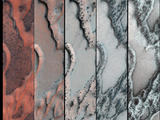 Seasonal Changes on Far-Northern Mars |
 Layers with Carbonate Content Inside McLaughlin Crater on Mars (Annotated Figure 1) |
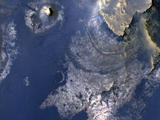 Layers with Carbonate Content Inside McLaughlin Crater on Mars |
 Curiosity's Traverse into Different Terrain |
 Curiosity Traverse Map, Sol 123 |
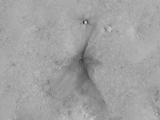 Impact Scars from MSL Cruise Stage and Two Balance Weights (Figure 2) |
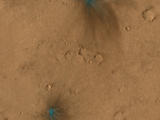 Impact Scars from MSL Cruise Stage and Two Balance Weights (Figure 3) |
 Impact Scars from MSL Cruise Stage and Two Balance Weights |
 Impact Scars from MSL Cruise Stage and Two Balance Weights (Figure 1) |
 Curiosity Rover's Traverse, August through November 2012 |
 Regional Dust Storm Weakening, Nov. 25, 2012 |
 Martian Dust Storm, Nov. 18, 2012 |
 Curiosity at Bradbury Landing Site in 3D |
 Parachute and Back Shell in 3D |
 'Glenelg' in 3D |
 Curiosity's Travels Through Sol 56 |
 Where Water Flowed Downslope |
 Curiosity's Roadside Discoveries |
 Curiosity Traverse Map Through Sol 43 |
 Carbon-Dioxide Snowfall on Mars |
 Curiosity Traverse Map Through Sol 29 |
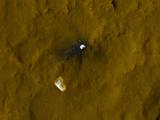 Relics of Rover's Landing |
 A Rover's Journey Begins |
 Orbiter View of Curiosity From Nearly Straight Overhead |